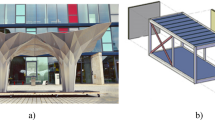Abstract
THIS famous tower will doubtless always be a question, like the man in the iron mask and other historical mysteries. Most architects, however, will be very slow to believe that it would have been built intentionally leaning on the general grounds that, however adventurous the architect, the clients would not have stood it. The analogy of the leaning towers of Bologna is hardly a sound one, as these plain shafts of brickwork, much like tall chimneys, can hardly be other than cases of settlement due to indifferent foundations. It should be remembered that construction was not a strong point with the Italians in the Middle and Renaissance Ages. In the case of the Tower of Pisa, Taylor particularly remarks on the wedge-shaped courses, which show an attempt to straighten the shaft. The best explanation appears to be that the tower was commenced, settled on its marshy bed, and that when the building was continued after a long interval it was considered safe to continue the work up to the limit of stability which could be calculated by the mathematicians of the epoch. The overhang is given by Taylor as 13 feet.
This is a preview of subscription content, access via your institution
Access options
Subscribe to this journal
Receive 51 print issues and online access
$199.00 per year
only $3.90 per issue
Buy this article
- Purchase on Springer Link
- Instant access to full article PDF
Prices may be subject to local taxes which are calculated during checkout
Similar content being viewed by others
Author information
Authors and Affiliations
Rights and permissions
About this article
Cite this article
BOLTON, A. The Leaning Tower of Pisa. Nature 84, 297–298 (1910). https://doi.org/10.1038/084297d0
Issue Date:
DOI: https://doi.org/10.1038/084297d0
Comments
By submitting a comment you agree to abide by our Terms and Community Guidelines. If you find something abusive or that does not comply with our terms or guidelines please flag it as inappropriate.



